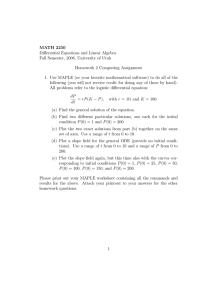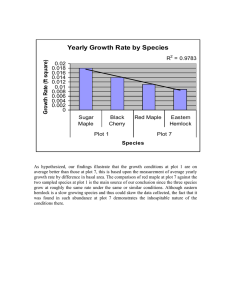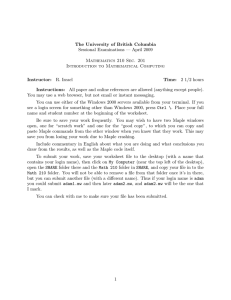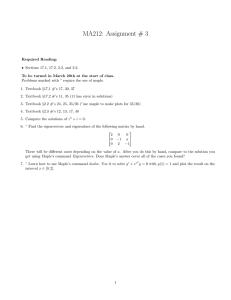MATH 2250 Differential Equations and Linear Algebra Homework 3 Computing Assignment
advertisement
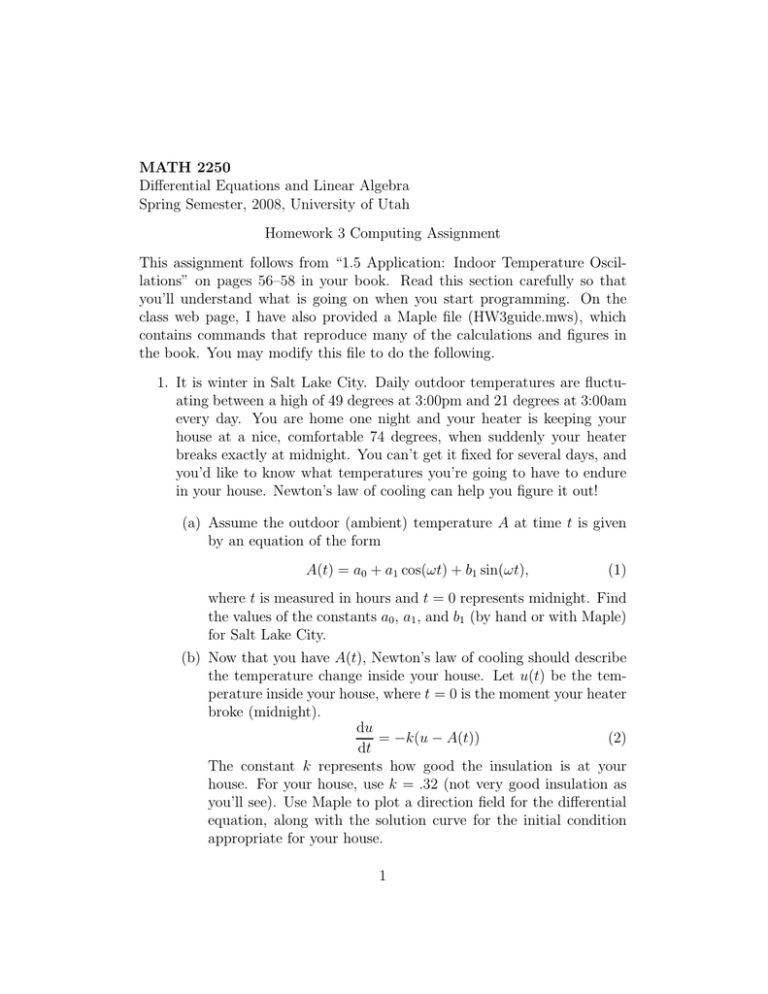
MATH 2250 Differential Equations and Linear Algebra Spring Semester, 2008, University of Utah Homework 3 Computing Assignment This assignment follows from “1.5 Application: Indoor Temperature Oscillations” on pages 56–58 in your book. Read this section carefully so that you’ll understand what is going on when you start programming. On the class web page, I have also provided a Maple file (HW3guide.mws), which contains commands that reproduce many of the calculations and figures in the book. You may modify this file to do the following. 1. It is winter in Salt Lake City. Daily outdoor temperatures are fluctuating between a high of 49 degrees at 3:00pm and 21 degrees at 3:00am every day. You are home one night and your heater is keeping your house at a nice, comfortable 74 degrees, when suddenly your heater breaks exactly at midnight. You can’t get it fixed for several days, and you’d like to know what temperatures you’re going to have to endure in your house. Newton’s law of cooling can help you figure it out! (a) Assume the outdoor (ambient) temperature A at time t is given by an equation of the form A(t) = a0 + a1 cos(ωt) + b1 sin(ωt), (1) where t is measured in hours and t = 0 represents midnight. Find the values of the constants a0 , a1 , and b1 (by hand or with Maple) for Salt Lake City. (b) Now that you have A(t), Newton’s law of cooling should describe the temperature change inside your house. Let u(t) be the temperature inside your house, where t = 0 is the moment your heater broke (midnight). du = −k(u − A(t)) (2) dt The constant k represents how good the insulation is at your house. For your house, use k = .32 (not very good insulation as you’ll see). Use Maple to plot a direction field for the differential equation, along with the solution curve for the initial condition appropriate for your house. 1 (c) Now plot the “steady periodic” solution (see book) together with the ambient temperature. Looking at the plot, what will be the (approximate) minimum and maximum temperatures that your house will reach on a daily basis? At what time of day do these extreme temperatures occur? (d) You realize that if your house is below 30 degrees for any extended time, your water pipes would freeze, and that would be bad. Looking at the last plot, about how many hours per day will your house be below 30 degrees? Try to find a value of k (lower k means better insulation!), for which the long-term indoor temperature would reach a minimum of about 30 degrees. This would be about the minimum insulation you’d need to avoid frozen pipes. Show the same plot as in part (c) for this new value of k. Please print out your MAPLE worksheet containing all the commands and results for the above. You may write in answers to some questions on your printout if Maple was not required. Attach your printout to your answers for the other homework questions. 2
